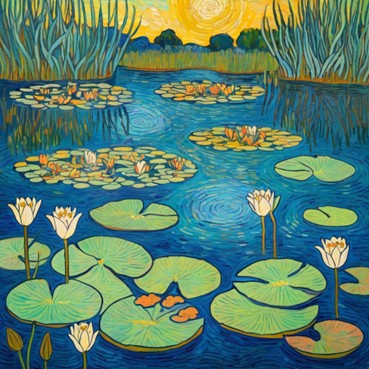
It's almost impossible to utilize smart technology today without running into it in some form or another; it powers your streaming service’s search and recommendation engines, it curates your social media feeds to perfection, it picks out the errors in your grammar, prepares your grocery list for you, and while it's at it, writes your academic papers, finishes your homework, plots your next book, and makes a grab at your most prized possession: Intelligence.
Indeed, in its artificial form, intelligence has taken over the world by storm.
Built on algorithms that allow it to recognize, analyze, and learn from patterns it picks up from vast databases, Artificial Intelligence is a machine built to learn, just like the human mind. And just as humans look towards education to expand and develop their knowledge and capabilities, so too does AI, only on a much larger scale, which allows it to fulfill just about any function one might assign it. It can generate code, it can dictate a structured essay, and perhaps the most morbidly fascinating of its capabilities is that it can be used to generate images of any subject, in any style, color, or form of execution requested.
It’s been witnessed countless times on social media, from candids of daily life transformed into alarmingly accurate Ghibli Studio-style drawings to the uncanny videos and images of celebrities placed in unlikely settings and situations. AI-generated content is spawning everywhere, from humble classrooms all the way up to national administrative bodies and political hubs, and so far, its use has gone mostly unbound by any rules.
Enter here the issue of art theft in generative AI. In fact, nearly all generative programs and tools are trained on pre-existing material - art styles, specific paintings, professional photographs, etc., - to be able to generate results mimicking the work or in the style of a certain artist.
It is as simple as entering a prompt such as “a Monet lily pond in the style of Van Gogh.” Not even a few seconds later, the result pops up on screen (and subsequently becomes the header of this article, for example).
Many users of AI tools argue that image generation does not constitute such a great offense, adding that generative AI makes “artistic creation more accessible” as a medium to people who might not have developed an artistic talent, for example. This argument is often part of the defense for these mediums, yet it hardly holds against scrutiny, which many critics of AI usage have pointed out.
Based on the aforementioned Monet/Van Gogh painting example, the problem with AI-generated imagery can be examined from a variety of angles. First, it manipulates human creation; it appropriates artwork with sentimental, historical, cultural, or even academic value and takes advantage of it to produce content that later, it will not credit or compensate these original creators for.
It does away with the notion of “originality” of the artwork: in fact, nothing AI-generated is original as a consequence of the way it functions.
It can damage, vulgarize, or even destroy a certain art style, considering that there are flaws that remain to be examined in AI content, and that can reduce the value of the real art style or work it is based on.
It refutes the principles of artistic integrity, which preserve the values and beliefs of a creator, by turning artworks into a mass consumption commodity.
It can be an affront to an artist’s copyright policies regarding their work, violating them entirely and without any effective restraint. Lawsuits have in fact been filed by artists against the companies that own and manufacture generative products, but so far, legal outcomes have been delayed by debate or have been deemed too vague.
AI-generated imagery's status and consideration as “art” remain the subject of a crucial ethical debate, considering the fact that the dematerialized algorithms exuding this content still lack the fundamentally human proclivity to create with their own mind and hands that our species developed so early on.
Indeed, if one is going to simply go by the Oxford Dictionary definition of the word – the use of imagination to express ideas or feelings […] - then the term AI “Art” does not stand, for one simple reason: AI can only regurgitate what it is given. It certainly may reshape and tune up the content it uses, sometimes even beyond recognition, but it does not create or imagine, simply because these skills remain firmly out of its scope.
As of now, a fair and final conclusion on this subject is rather difficult to draw, but a brief warning can be emitted: AI-generative imagery is a tool that can easily lead to a facilitation of art theft, whether it’s on purpose or not, and not only should regulatory measures be envisioned to solve the issue, but proper legislation and proactive measures should be put in place to ensure the protection of authentic human creation, be it artistic or more.